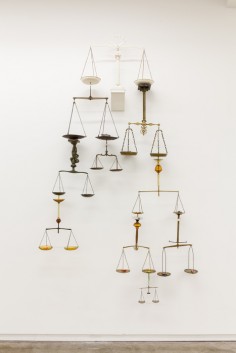Glenn Kaino
source: warholorg
Glenn Kaino, a Japanese American artist born, raised and currently working in Los Angeles, has versatile skills as an art maker and director of large media projects. Weaving in and out of fine and commercial art realms, Kaino has worked as a co-founder of Deep River Gallery in LA and as chief creative officer of Napster. He has also taught at UCLA and University of Southern California. Kaino’s work has been shown at the Whitney Biennial at the Whitney Museum of American Art in New York, The Studio Museum in New York, the Museum of Contemporary Art San Diego, The Walker Art Center in Minneapolis and The Andy Warhol Museum, Pittsburgh.
Transforming commonplace objects and iconic cultural symbols, Kaino (like Andy Warhol) references the subtleties and ironies of popular culture. He often explores issues of cultural identity through both still and kinetic sculptures. In Graft, a proud and ominous ostrich stands atop a light box. The ostrich is a plastic, life-sized reproduction, but the artist has sewn the bird’s exterior—by hand—using real python snake skin. Kaino gives careful consideration to his materials and process in order to evoke meaning. Possible associations a person might make after viewing Graft range from plastic surgery and second skins, to fashion accessories and trends. In grafting new skin onto this nomadic, head-in-the-sand herbivore, Kaino creates a new bird—a likely predator capable of dealing death by its grip. The inner nature of the tightly bound bird is hidden in plain sight. Like taxidermied animals found in hunting lodges and natural history museums around the world, this once-fast hybrid ostrich is now permanently stilled.
.
.
.
.
.
.
.
source: artknowledgenews
Glenn Kaino, um artista de Los Angeles-nascido e com base, cria em grande escala, mixed-media e esculturas cinéticas que refletem sua estratégia de usar mudanças formais inesperados e mudanças de sentido de desestabilizar o espectador & rsquo; s compreensão dos objetos familiares. As obras resultantes fazer referência à história cultural, consciência política, a física quântica e da contradição.


